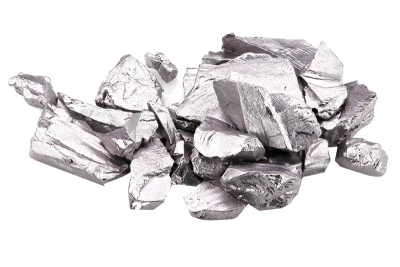Tantal
We trade with metal scrap of the following alloys:
- Tantal CP
- TaW
- TaRe
- TaNb
- TaMn
Tantalum is a chemical element with the symbol Ta and the atomic number 73; in the periodic table it is in the fifth subgroup or vanadium group. It is a rare, ductile, graphite-grey, shiny transition metal. Tantalum is mainly used for capacitors with high capacitance and small size. Since the metal is non-toxic and inert to body fluids, it is also used for implants such as bone nails.

Use
Use of the
The largest part of the tantalum (worldwide annual production of 1,400 t) is used for very small, high-capacity capacitors. In 2007, 60% of tantalum was used to manufacture capacitors. These tantalum electrolytic capacitors are used everywhere in modern microelectronics, for example in mobile phones and automotive engineering. The effect is based on the tantalum oxide layer on the surface of the wound tantalum foil, which is still stable and reliably insulating even in a very thin version. The thinner the layer between the electrodes, the higher the capacitance while the film surface remains the same; in addition, tantalum oxide has an extremely high permittivity, which also increases the capacitance.
Since tantalum is non-toxic and does not react with body tissue or fluids, elemental tantalum is used for medical implants and instruments. For example, bone nails, prostheses, clasps and jaw screws are made of tantalum. As a coating on a porous carbon lattice, it achieves particularly good osseointegration, which is why tantalum-coated implants are used primarily in reconstruction surgery for major tumor or infection-related bone substance loss, without, however, having an antimicrobial effect. In addition, it is an X-ray contrast medium that is used only rarely due to its high costs.
Tantalum is used in the chemical industry because of its resistance. It serves as a lining material for reaction vessels and is used for heat exchangers and pumps. For these purposes, no pure tantalum is usually used, but alloys containing 2.5-10 % tungsten. These are more stable and resistant than pure tantalum. At the same time, the desired ductility is maintained. Further applications are laboratory equipment, spinnerets and the cathodes of electron tubes. Here, tantalum benefits from its ability to absorb up to 740 parts by volume of gases at 800 °C (getter effect), which ensures a high vacuum in the tubes.
Superalloys used in the construction of turbines and aircraft engines contain up to 9% tantalum. The addition of 3-4% tantalum to a nickel superalloy increases the strength of the material at high temperatures.
In the Wikipedia is a List of authors available..
